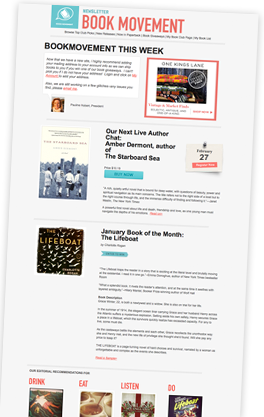BKMT READING GUIDES
Jane's Jam: Inspiration to Create Your Super Awesome Life
by Jane Enright
Paperback : 256 pages
0 club reading this now
0 members have read this book
Introduction
Jane’s Jam is all about finding sweetness when life gives you lemons and leaves you feeling sour—like you’re butter side down instead of butter side up. Jane Enright knows from personal experience that holding fast to moments of laughter, happiness, contentment, and joy can support us to create a super awesome life, no matter what the situation. In Jane’s Jam, she leads readers through a thought-provoking, playbook approach to creating new beginnings after seeming endings—finding the good while handling the unexpected. Packed with uplifting, practical strategies and tools for overcoming obstacles and increasing outside-in thinking, mindfulness, and gratitude, Jane’s Jam can help you not only respond more positively to change but to thrive in the midst of it. A book you can pick up, open to any section, and find something to help you navigate the situation you’re in, Jane’s Jam will teach you to look at change differently in your life and use it to your advantage. Read it. Bookmark it. Mark it up. Give it to a friend. This inspiring, accessible guide is your go-to reference for creating fresh, new storylines for yourself. Jane's Jam is a 2023 Eric Hoffer Award Grand Prize Finalist
Editorial Review
No Editorial Review Currently AvailableExcerpt
Starting today I need to forget what’s gone, appreciate what still remains, and look forward to what’s coming next. —BECKY JOHNSON Have you ever had to call a game? Had to make a choice you never thought you would have to make, or a decision that you knew was the right one but probably an unpopular one? In 2019, eighteen months after my most terrible year, I made the hardest call I’ve ever had to make. After suffering one serious head injury, my fiancé experienced a second, catastrophic one—so catastrophic that he awoke from a ten-day semi coma, unable to remember me or anything about his life or our life together. The doctors said that Clayton might never fully recover from his injuries. Thankfully, he would eventually defy many of their predictions, but his earlier traumas and the aftermath of my own life-altering concussion had already put a strain on our relationship. This time, he would require ongoing intervention that I could not provide. I still loved him, but in my heart, I knew (like in that movie with Robert Redford and Barbra Streisand) that we would never again be the way we were. What would you do? I did two things. First, I accepted what had happened for what it was. I didn’t like my new reality; I just didn’t deny or resist it. I grieved the loss of what Clayton and I had been and what I had wanted us to be, but I didn’t dwell on it. Then, after over a year of soul-searching, I decided to end our romantic relationship. I told him I felt that if our lives continued in the same way, I would become resentful of my life rather than grateful for it as I should be, and that would be devastating for both of us. The next seven months were painful—we had no contact with each other during that time, and some people judged us harshly for the choices we both made. The good news is that, despite this, Clayton and I were willing to try to accept what had happened and let go of the pain. We’re still at peace with our choice, and we’re still close friends who support and love each other and take care of each other, but in a different way. We are supporting actors in each other’s lives, rather than taking the lead. Our ending brought us a new beginning, a joyful new chapter. One that we continue to appreciate with love and gratitude. It Is What It Is Sometimes, facing reality isn’t easy. However, I don’t want you to pretend that you feel good about something when you don’t. It is natural to be disappointed and disheartened when things don’t seem to be going the way you feel they should. It is okay to not be okay. Let yourself feel the grief and sadness. But, at a certain point, you can become like a hamster on a wheel and run the risk of becoming comfortable with these negative emotions, making it very difficult to move past them. When this happens, and people get caught in the weeds of discontentment, they prevent themselves from creating new beginnings. Acceptance, which on its face is neutral, is the first step toward letting go of emotions that can bog you down. It’s your “go route,” as they say in football, to moving forward and creating your super awesome life. For example, we all have felt the struggle to accept the fact that COVID doesn’t seem to be going away. But accepting that COVID is change that can change its mind any time does not mean that you need to be happy about COVID or how it mucked up your plans for how you wanted to live your life. It does mean, though, that you can try to stop resisting the changes it has brought. Ironically, when we resist the unknown out of fear, that fear of the unknown gets to be in charge of our lives. Acceptance—openness to change—helps us manage our emotional health and helps our minds become more flexible and receptive to pivoting in a new direction. If you accept that rapid unexpected change can happen at any time, and that everyone deserves the right to be happy, you set the stage for using strategies such as outside-in thinking, mindfulness, and gratitude more effectively. You also build a foundation for self-acceptance and discovering your bliss. As I work through this journey called life, I accept that my life, and every day of my life, is a gift. I accept that, while I cannot control things like the weather or a pandemic, I can control what I think about, how I respond to change, and how I spend my time. Therefore, acceptance is not looking at the world through rose-colored glasses. It is recognizing the reality of your situation and allowing it to be what it is, without judgment of yourself or others. Accepting that change has occurred helps you move forward, shift your perspective, and develop a more positive mindset. In turn, acceptance can help you become a more flexible thinker and foster your ability to respond to changes productively rather than react to things impulsively, so you can better handle, and look forward to, what comes next. CHAPTER TWO Learning How to Let Go and Accept Happiness depends on how you accept, understand, and surrender to situations. —MAYA AMRITANADAMAYI Accepting the reality of your life sounds like it should be simple enough. But sounding straightforward and being easy to do are different things. Just like any skill, if it’s new to you, it takes courage (which you have, even if it doesn’t feel like you do), and you also need to practice in order to become proficient at it.. In this chapter, I give you ideas that will help you better understand the concept of acceptance and how to use it to your advantage when making choices. The better you get at accepting change, the less combative you’ll feel in the face of it, which puts you in a better position to discover the happiness you are working so hard to have in your life. ACCEPTANCE GO ROUTES Acceptance Go Route #1: Five Super Awesome Strategies to Practice Acceptance Accept yourself. For most of us, self-acceptance can be challenging because we’re so used to being our own worst critic. Instead of looking in the mirror and noticing only your flaws, try focusing on what’s positive about yourself first. Make a list of your virtues, your talents, your values, your accomplishments. When you keep your strengths in mind, you’re more likely to make choices that play to them. Acknowledge your circumstances. Ignoring or rationalizing your circumstances won’t change them. But if you acknowledge your situation, you can ground your goals in reality, making them much more likely to achieve. Accept that there are no mistakes in life, just lessons. Own your outcomes, even if they are messy. It’s a lot easier to mend something if you admit that it’s not working. Look at it as a learning opportunity and as a chance to accomplish what’s important to you. Try not to let fear get in your way. Each individual’s journey is unique. Don’t let fears—especially fear of what others might think of you if you switch gears or take a different life path—stand in your way. You must be willing to do things in ways you think are best for you. Accepting this keeps you from comparing yourself to others as you navigate change. This attitude will help you find the courage you need to make tough choices, but choices that are right for you. Accept that challenges will always be part of your journey. Don’t shy away from challenges, but rather accept that life will always throw us the unexpected. Learning to confront struggles instead of avoiding them builds our resilience. And you never know—sometimes the most challenging experiences provide the most potential for success. Acceptance Go Route #2: Harness the Power of Positive Affirmations Author and spiritual teacher Louise Hay built her work on the theory that humans are creatures of habit, that our brains are hardwired for routine, and that our thoughts are merely habitual patterns.4 She believed that when we change our thoughts and embrace a more optimistic attitude, we can change and improve our circumstances.5 Affirmations, or positive self-talk, are a way to change our thinking habits, a guide for our mind using positive words and statements to reframe our perspective. The tipping point is not only thinking that things can be different but feeling it too. This is how we become the quarterback of our life, the individual who makes things happen, rather than the receiver, who waits for things to happen. Try repeating the following Louise Hay phrases, using your own words, and observe the effect they have on your outlook and emotions over time: -- I have the strength to remain positive in the face of change. -- I am a capable person and can handle anything that comes my way. -- I trust myself to deal effectively with any problems that arise throughout the day. -- I am in the process of making positive changes in all areas of my life. -- I am willing to learn. The more I learn, the more I grow.6 Acceptance Go Route #3: Start an “If Things Were Different” Journal Set aside time each day to write down your thoughts and feelings about a situation in your life (past, present, future) that is challenging to accept. As you’re writing, answer these questions: If things were different, and I could move past this event, what would I like to see happen next for me? What would I change for the better? How would I spend my time in a way that benefits me, moves me forward toward my goals, and enriches my life?Discussion Questions
From the author:1. Do you agree with the author’s ideas that we can create happiness, not just find it?
2. What was your favorite chapter in Jane’s Jam and why?
3. Is there an inspiring quote that gave you an “aha moment” or food for thought and helped you move forward in a positive?
Book Club Recommendations
Recommended to book clubs by 0 of 0 members.
Book Club HQ to over 90,000+ book clubs and ready to welcome yours.
Get free weekly updates on top club picks, book giveaways, author events and more








